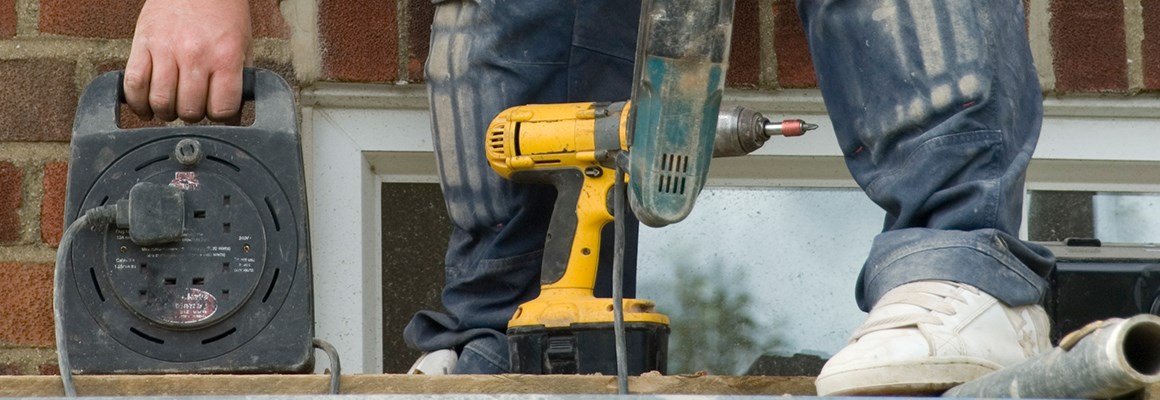Home maintenance checklist
When it comes to your home, a little TLC goes a long way.
By knowing how to spot potential problems and keeping a look out for the warning signs, you could save yourself a lot of time and money by catching any issues in the early stages.
To help you stay one step ahead, we’ve put together this handy maintenance checklist, which you can download (PDF 770kb) and refer back to.
Outside your home

1. Roof
To avoid a leaky roof, keep a watch out for any cracks or movement in your roof tiles or slates. It’s important to fix them back into place, or replace them, as quickly as possible to prevent any water damage. If your tiles or slates are held by nails, check the underside of your roof to see if there is any corrosion as this will make them more likely to slip.
If part of your roof is flat, maybe due to an extension, watch out for standing water. If you notice a damp patch on your ceiling, it could be because water is pooling above. Any signs of lifting, cracking or vegetation growth could cause water to seep through too.
2. Chimney
Look out for deterioration of the mortar pointing and any displaced render or leadwork. This could cause the chimney to lean, meaning the structure is no longer secure. Damp patches in the rooms below the chimney could mean that it has gaps which water is getting in through.
3. Guttering
Maintaining your guttering is relatively simple. Regularly check for foreign objects that may have fallen into the gutters and cause them to overflow. If they remain overflowing, the excess water could drip on to woodwork below, causing it to rot, or cause internal dampness on the walls below.
4. Drains
Similarly to your guttering, regular maintenance of your drains can prevent any more serious issues. Unblock your drains, removing any leaves or debris, as often as possible. Avoid washing any substances that you shouldn’t down the sink. If your drain is blocked, you’ll notice water overflowing out of it, and possibly a damp or unpleasant smell.
5. Cavity walls
If you live in a house made from brick, it’s important to know how to spot the early stages of cavity wall tie failure. If there is an issue, you’ll notice regular horizontal cracking on the exterior of the building. At this stage, you could still maintain the cavity by inserting replacement ties. If the problem is left too long, the wall will look as though it is bulging and this could lead to the wall needing to be rebuilt.
6. Japanese Knotweed
This invasive weed can damage walls, pathways and your building. Worst of all, it can spread from neighbouring gardens into yours, or the other way around. To remove Japanese Knotweed, you’ll need to call in the professionals. Look out for early signs of growth in mid March, but new shoots can still be found growing in November.
Inside your home

1. Ceilings
Wet rot and dry rot can cause significant damage to the structure of your ceiling, but can be easy to spot. If woodwork is wet or soft, wet rot is likely to have set in due to fungal growth. You might notice a damp and musty smell, and if dried out, the wood will crack and crumble easily. Signs of dry rot are cracking across the grain and cotton wool-like fungal growth with red fruiting bodies and black thread.
2. Bathroom
Cracked or missing sealant around your shower basin and bath can cause water damage not just in your bathroom, but in the rooms below too. Stay on top of sealant by replacing any that looks worn, and look out for damp stains from water coming through the ceiling in rooms below.
3. Walls
Mould is a common problem, especially in older homes. If you notice black mould growing on your walls, it’s caused by condensation due to either too much moisture in the air and not enough ventilation, or to the structure’s poor thermal qualities. Other signs of a condensation issue are water running down the windows, dampness on walls and ceilings, and black or green mould growing in the backs of cupboards on outer walls.
4. Doors
Noticed that a door is sticking? This could mean that there has been movement of the building’s structure. Look out for cracks in the plasterwork or wallpaper, cracks more than 3mm in the exterior brickwork and signs of sloping too.
5. Windows
A leaky window can be a sign of rotting woodwork. Or if you have PVC window frames, check the sealant for cracks to avoid leaks.
6. Floors
Springiness in your floorboards, a damp musty smell and dampness in the bottom of a wall can be signs that the joists that support your timber floor are rotting. If ignored, fungus will eat away at the wood and the floor could collapse.
So now you know the warning signs, you can keep your eye out for any potential problems arising in your home, and keep them under control. As well as regular maintenance, you can ensure your property is covered for more serious issues with home insurance.
If you’re looking to move home, you’ll want to keep a look out for signs of all the above during your viewing. Plus, homes that fall under the category of a non-standard construction property – such as thatched or wattle and daub properties, eco homes, and steel or timber-framed houses – will require specialist home insurance to ensure your build is adequately covered.
Home Maintenance Checklist
PDF 771KB
Home Contents Calculator
Get a better view of the value of those things that truly make your house a home with our Home Contents Calculator tool. Simply add all the rooms in your home and your possessions, and you’ll be given an overall summary of the contents of your home.Looking for something else?
